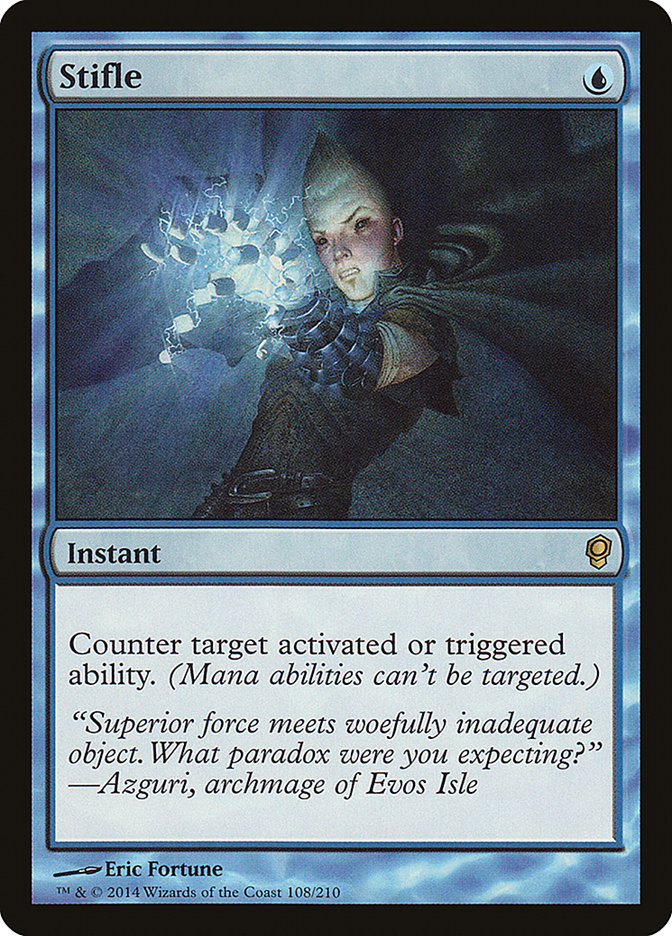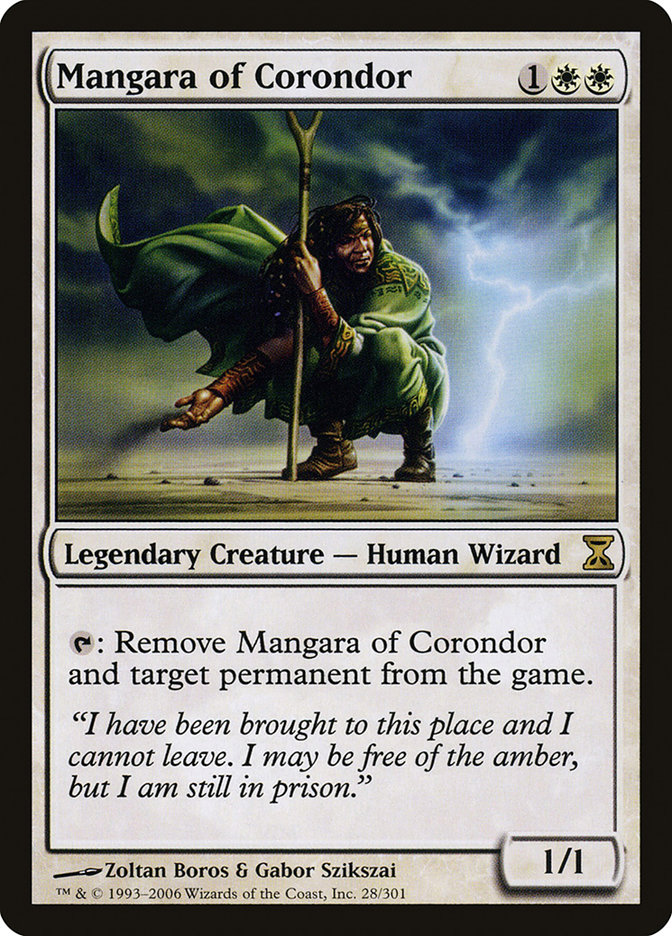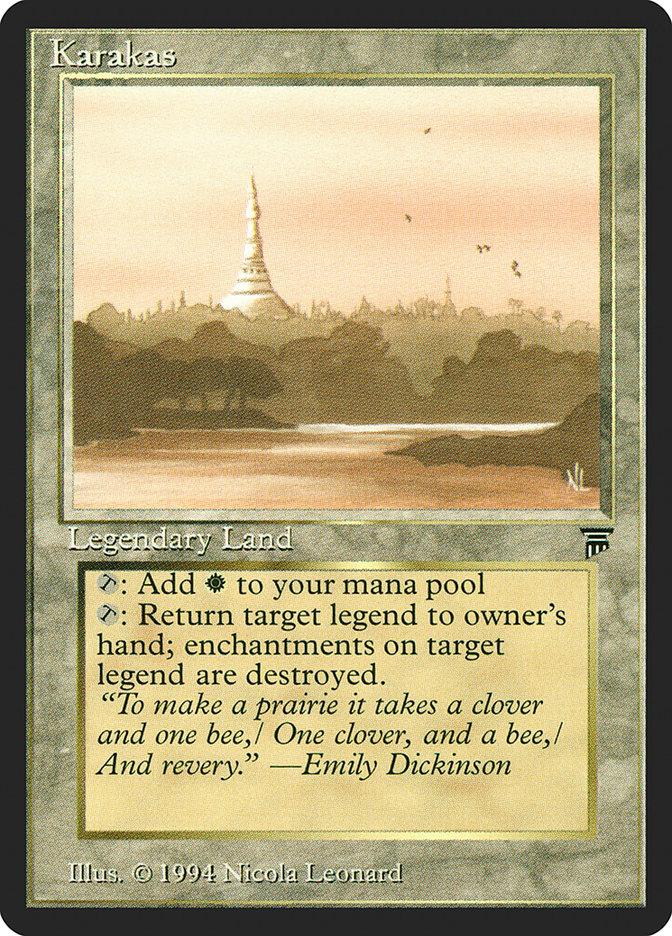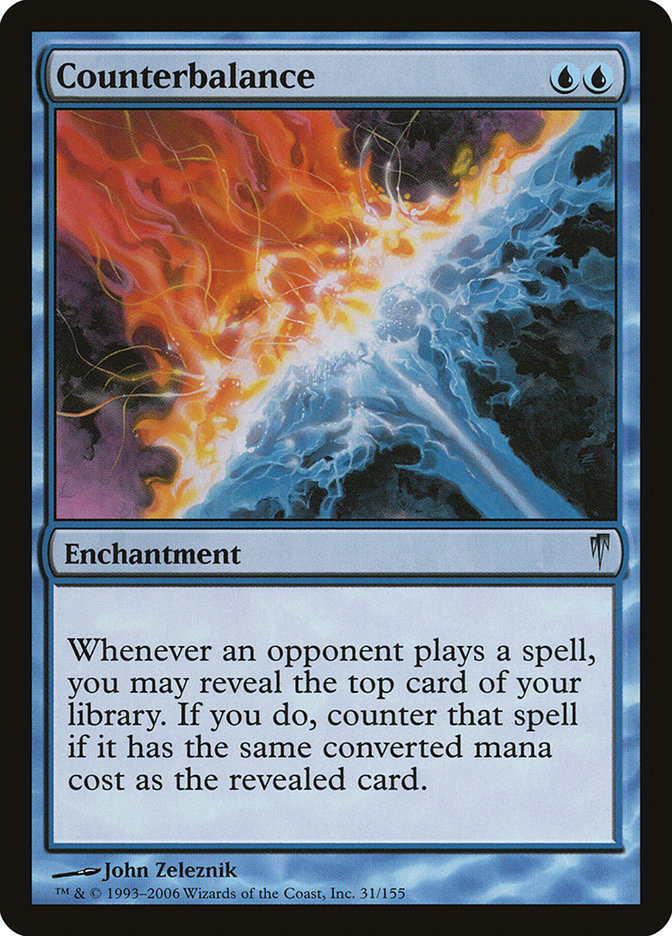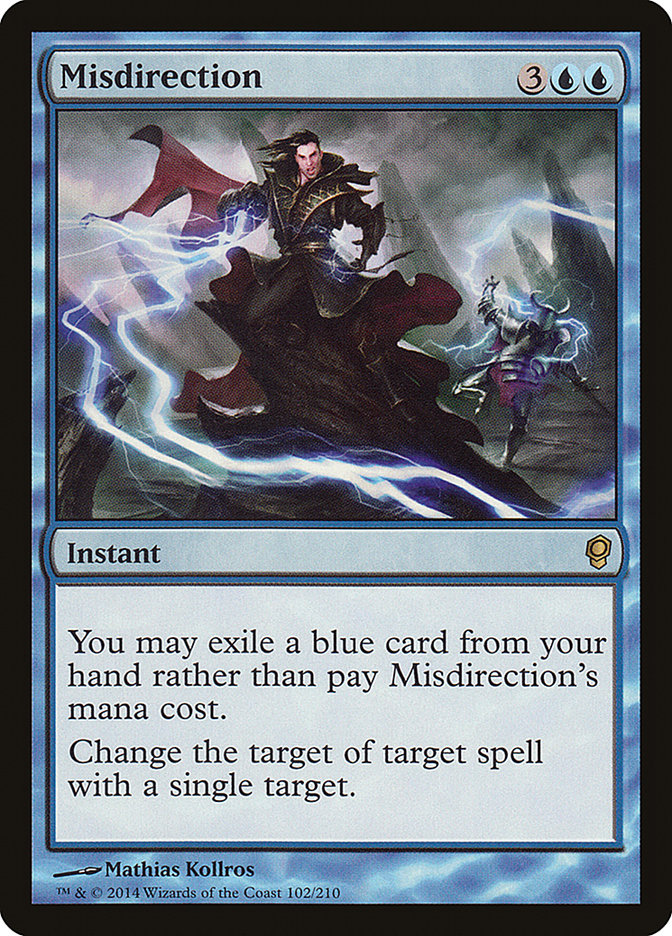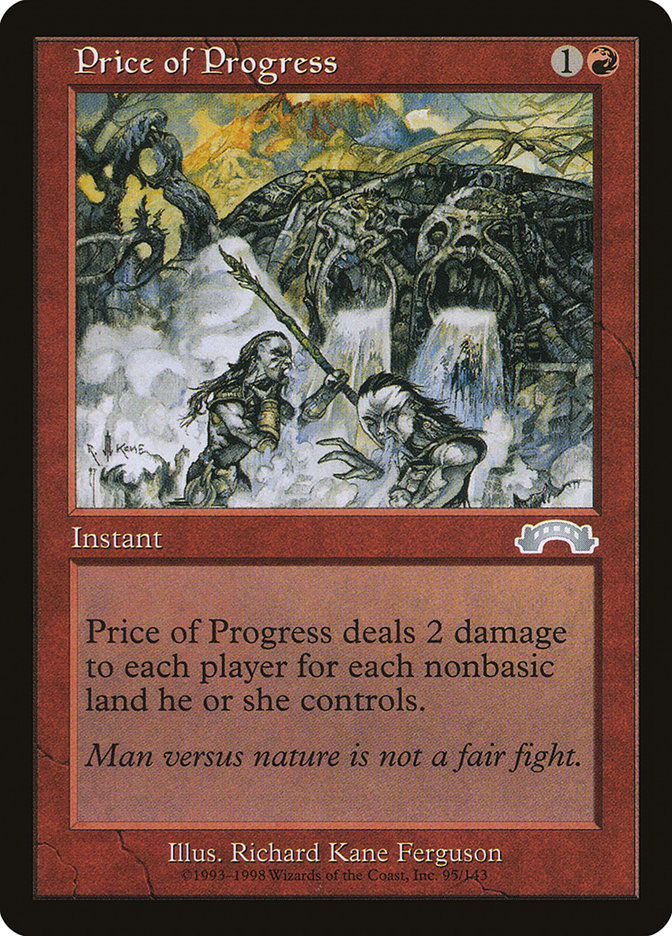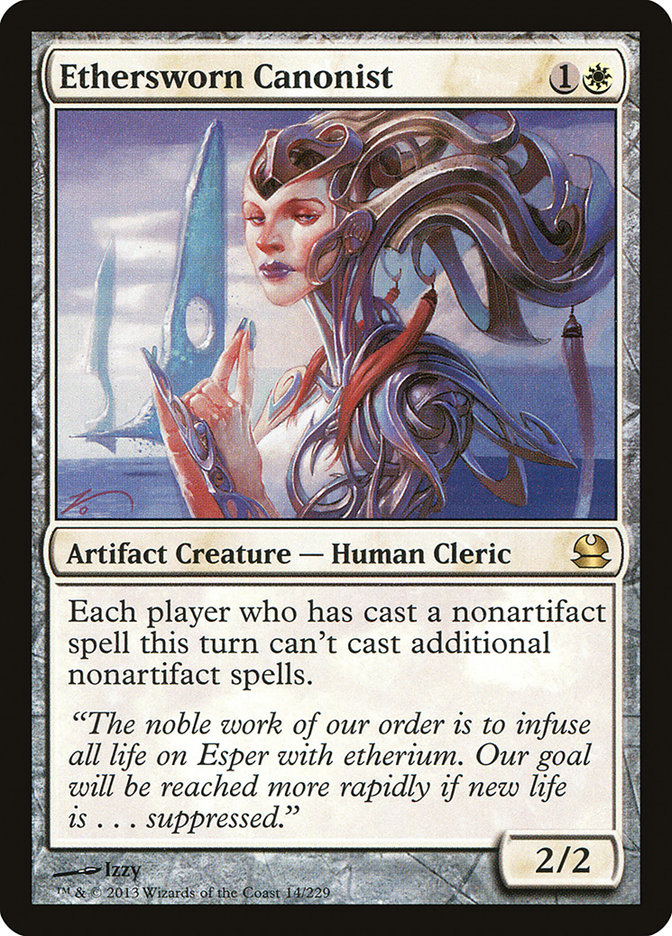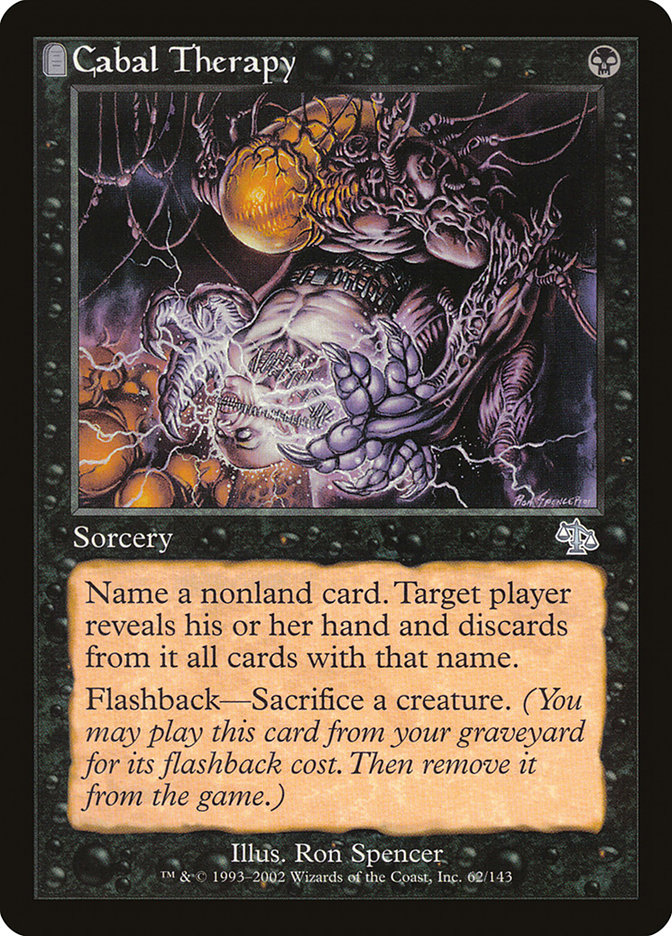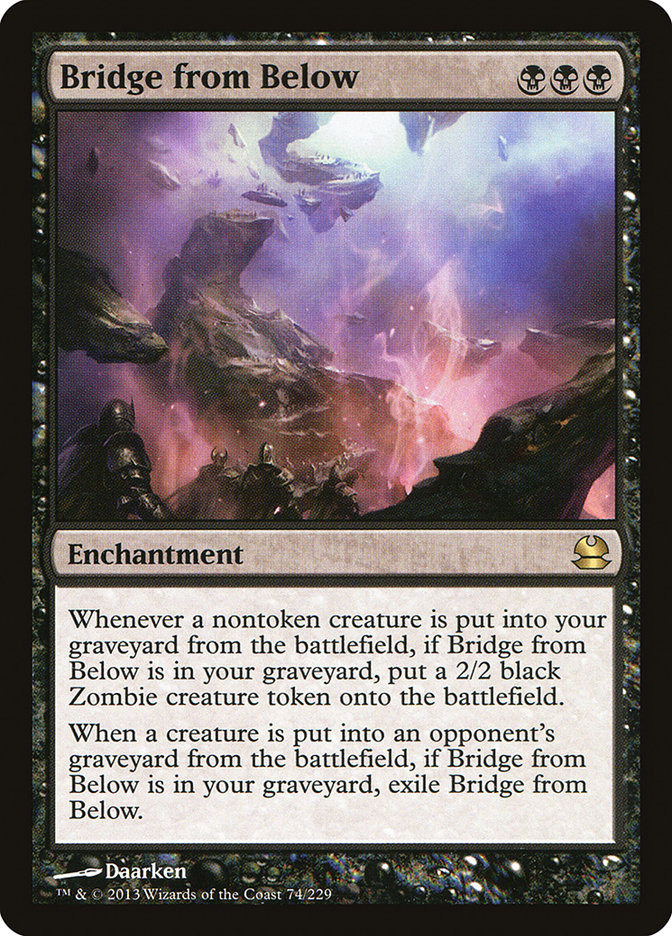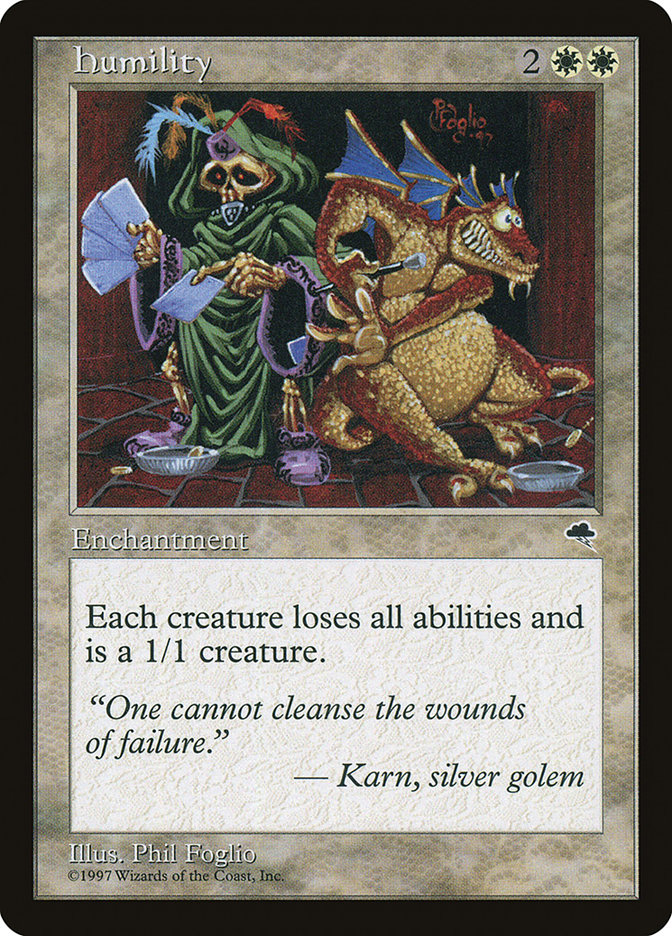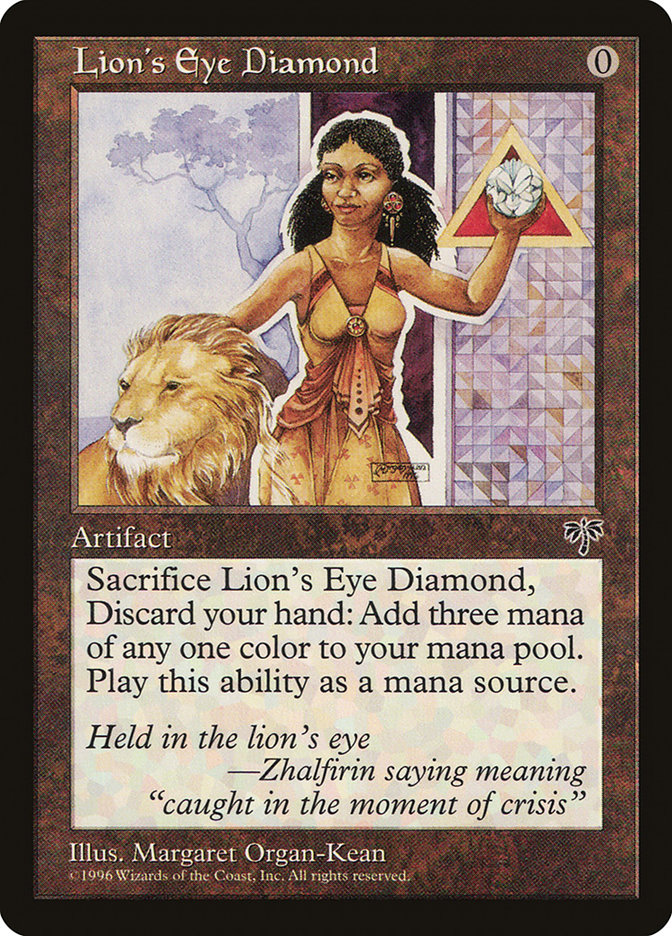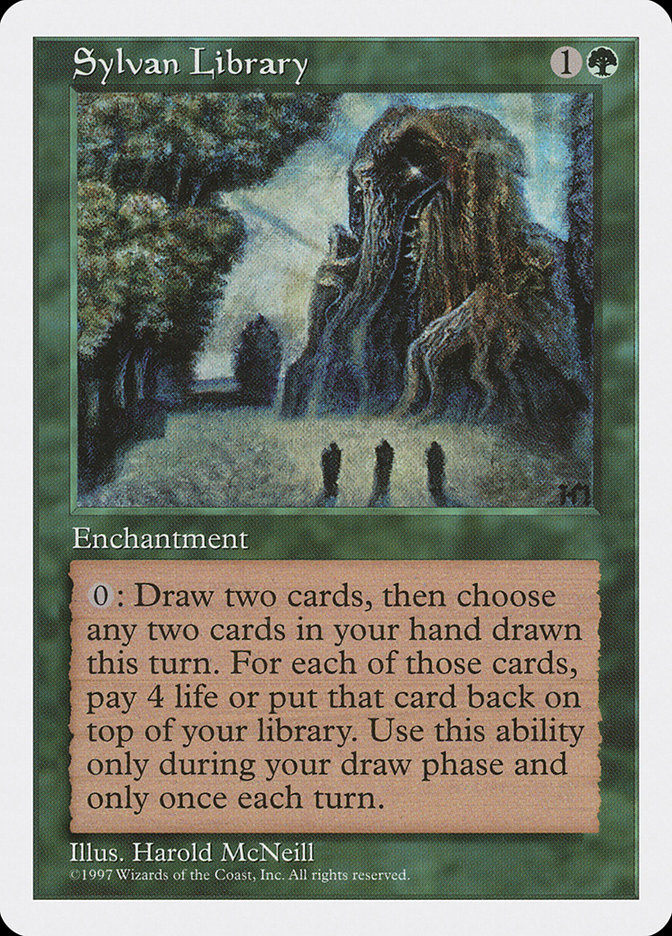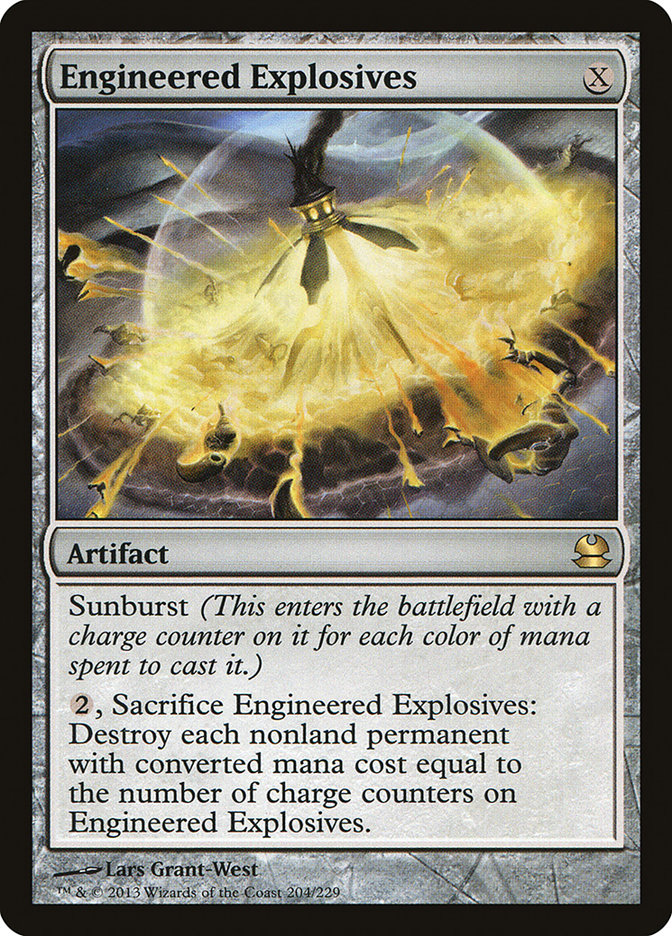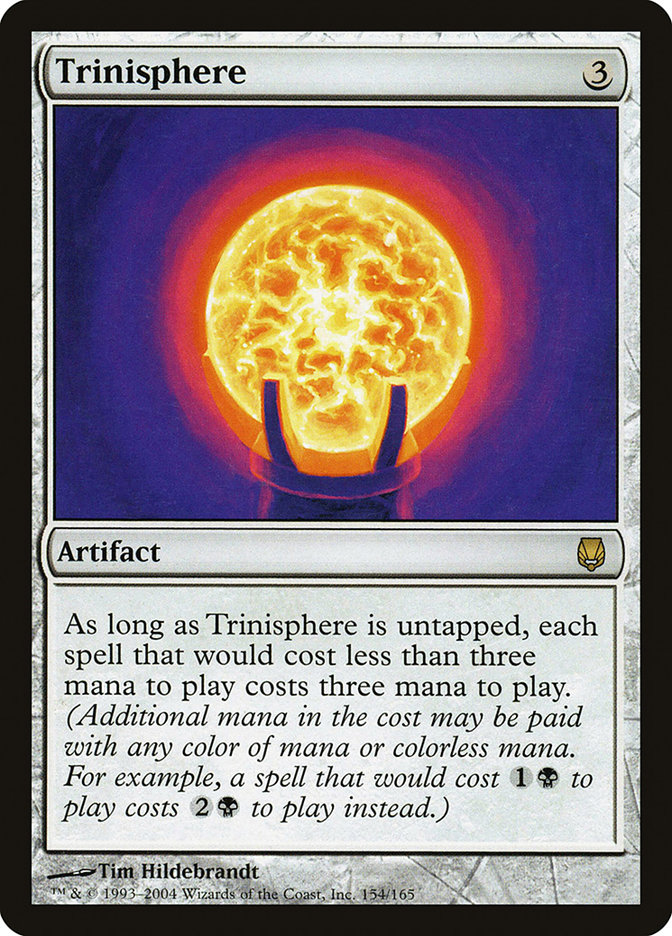People love to talk about Legacy as a diverse format filled with wild plays and obscure cards. While much of the format centers on familiar interactions –
Onslaught and Zendikar fetchlands finding two-basic-land-type dual lands printed in Alpha, Beta, Unlimited, and Revised – you will absolutely run into some
off-the-wall situations in New Jersey.
Many of my articles involve strategic analysis and advice on how to balance priorities in resource-scarce situations. This article will have some of that,
but it will focus far more on the situations that are cut and dry, black and white, right and wrong.
If you don’t want to end up on the embarrassed end of a judge call, you should read this article. If you’re a Legacy aficionado or a judge, it is possible
that even you will learn something from this article.
Regardless of your experience and rules knowledge though, please respect that everything in this article has confused someone at some point. As a result,
it would be in poor taste to go into the comments and post something like “Who would ever mess up [thing]?? Only a person of truly lacking intelligence
could make such an elementary mistake!” The comments of this article are a bad place to show off. I would like for people to feel safe asking questions
about situations that I haven’t mentioned, since the entire point of this article is to be educational. Posting derogatory comments is especially harmful
in this context, and so I’m going out of my way to ask for special consideration of tone up front.
Broadly speaking, I’m going to talk about four types of confusions:
– Cost versus effect, which tends to be situations where people think that some costs are actually effects, and vice versa;
– Priority/timing mishaps, which are typically things where people resolve effects too fast or out of order or omit a point where interaction could happen
(but rarely does);
– Casting versus triggers, which are mostly situations where something has a trigger and something else looks for something to be cast; and
– Cost increases of any kind ever.
I guess there will also be a section at the end with a few random “only in Legacy” card interactions, but the vast majority of misunderstandings can fit
into one of these four categories.
Let’s get started with a personal favorite of mine:
1.”F****** Miracles, how do they work?”
I cannot guarantee much about a Legacy Grand Prix, but I can near-guarantee that you will play against Miracles if you’re planning on making a deep run in
New Jersey. It’s a good deck, it’s popular, and it has seen success in the two most recent Legacy Grand Prix.
Common situation the first: your opponent has a Sensei’s Divining Top and only a Flooded Strand for untapped lands.
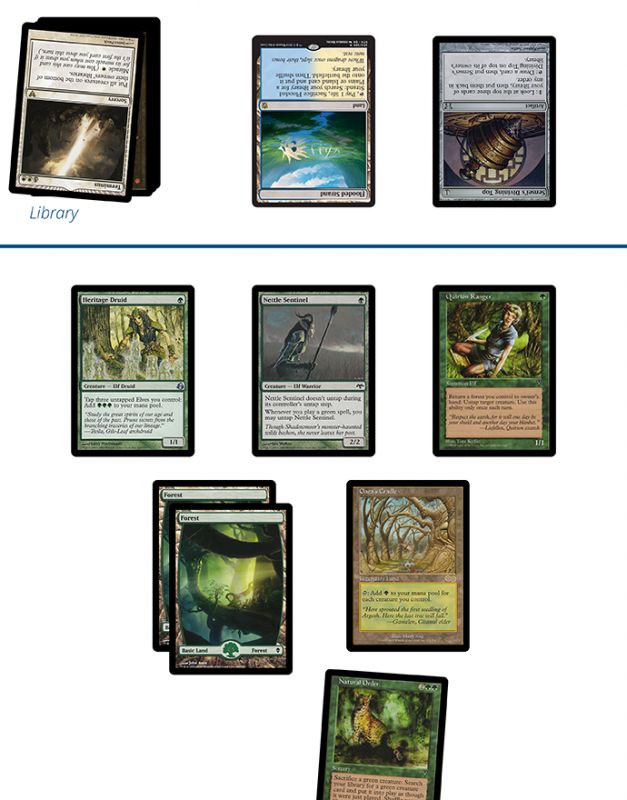
You have a hunch that they have Terminus on top. Can they cast it on your turn?
Answer: Yes.
Reason:
You may be inclined to think that they have to have mana available for Terminus when they trigger Miracle. You would be wrong. There are two parts to every
Miracle: the trigger and the casting.
The trigger is what you mess up all the time by drawing the card and putting it right in your hand. A Miracle’s trigger is created by the first drawn card
of the turn being that Miracle. At the point where that happens in this situation, Sensei’s Divining Top’s second ability will have finished resolving, Top
will be the top card of their library, and Terminus will be – technically – in their hand.
In live gameplay, people typically fulfill the Miracle mechanic’s explicit “keep this revealed” condition by placing their Miracle on the table rather than
ever bringing it up to their hand. Regardless, there is a period of time where Terminus is in their hand, their trigger is on the stack, and they have
priority.
It is at that point that they are able to break Flooded Strand for a Tundra or Plains to provide mana to cast Terminus. They’ll lose track of their
Sensei’s Divining Top, but they’ll get to cast their Terminus. If you just committed all of your resources to a lethal Natural Order-into-Craterhoof
Behemoth turn, that probably isn’t what you want to hear. Regardless, better to learn now than in round 7.
Corollary:
Since they can respond, so can you.
Here’s a short and by no means comprehensive list of ways that you can respond to Terminus’s Miracle trigger in ways that will deal with it:
You can Vendilion Clique a Miracle out of someone’s hand before they can pay the mana to cast it.
You can Stifle a Miracle trigger.
You can Vial in Chittering Rats, if that’s your jam.
You can Vial in Gaddock Teeg.
You can Vial in Meddling Mage and name Terminus.
Once they pay the mana to cast it, you can Counterspell it or Force of Will it or Daze it, but you can no longer Clique it or Stifle it or Gaddock Teeg it
or whatever else. Before they pay the mana, it’s in their hand. After they pay the mana, it’s on the stack. Conduct yourself accordingly.
2. Sorry, how do I use this Stifle?
Stifle has such an innocent-looking line of rules text. Let’s check it out.
The most common application for Stifle is to effectively Stone Rain your opponent’s fetchland. The way this works is as follows:
Them: “activate Flooded Strand, go to 19″ *they reach for their library*
You: “I have a response.”
You: “Stifle your Flooded Strand.”
At this point, they’re at 19, their Flooded Strand is in their graveyard, and your Stifle is targeting their effect from Flooded Strand. If your Stifle
resolves, they don’t get their fetchland effect. If they counter it, they do. Basic stuff, right? Okay, let’s try for something a little harder.
Your opponent suspends Rift Bolt, puts a penny on their card, and passes.
You play an Island and pass.
They untap their Mountain, point at their Rift Bolt, look at you, and ask, “Trigger?”
Stifle it or no?
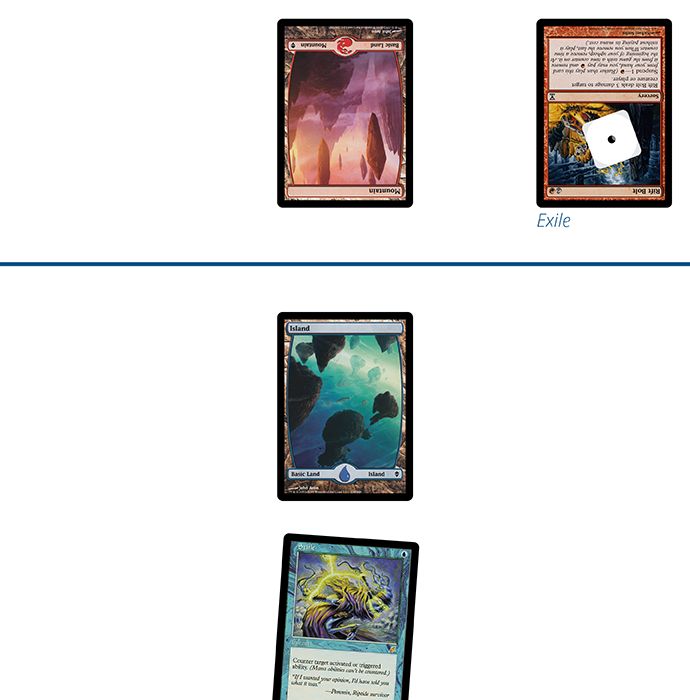
…
Answer: No.
If you Stifled their trigger, the penny stays on the card. You just Stifled their “remove a time counter” trigger.
So you got it right and said “no.” They take off their penny and maybe try to hustle things, move slickly through the other part of Rift Bolt’s resolution,
and skip right to the part where they lift their card off the table, point it at your head, and say “take three.”
You want to say “Stifle your unsuspend trigger” after they take the time counter off their card. The way that suspend cards work in the turn that they get
cast involves two triggers: the last time counter and the unsuspend trigger. You don’t want to Stifle the first one, you do want to Stifle the second one.
If you Stifle the unsuspend trigger, the Rift Bolt will stay in exile with zero time counters on it for the rest of the game. Since it doesn’t have any
time counters on it, your opponent will never be able to take a counter off and put the “cast Rift Bolt” trigger on the stack. In effect, your Stifle
“countered” their Rift Bolt – mana for mana, card for card – although again, you really want to specify that you’re Stifling the unsuspend trigger.
The fun with Stifle doesn’t end there though! Let’s walk through a few other common situations:
Them: “Activate Aether Vial.”
You: ….
Do you cast Stifle here?
What happens if they put their creature on the table?
What happens if they don’t have a creature?
Let’s address those in reverse order. If they don’t have a creature, they don’t put a creature into play.
If they put a creature on the table, the ability just resolved.
If you want to cast Stifle, it will be after they tap their Aether Vial and before they show you if they have a creature or what it is. If they activate
Aether Vial and show you their creature in one fell swoop when you prefer to Stifle their activation, you should do the following:
– Try your absolute hardest to not see what their creature is
– Call for a judge
– Explain that you didn’t get a chance to counter their Aether Vial activation, and that you’d like to
– The judge will ascertain that you didn’t verbally acknowledge the ability’s resolution and, if you didn’t allow it to resolve, back up the gamestate to
let you Stifle the ability.
Failing to follow the first step is technically legal and also a classic scummy thing to do, so feel free to run that if you’re not plagued by pesky things
like “moral compunction.”
One more in-depth situation before going to the lightning round.
You’re playing against Dark Depths+ Thespian’s Stage and have Stifle. It’s your turn, and you’re attacking for lethal. They have Dark Depths, Thespian’s
Stage, and enough mana to activate. How do you do this?
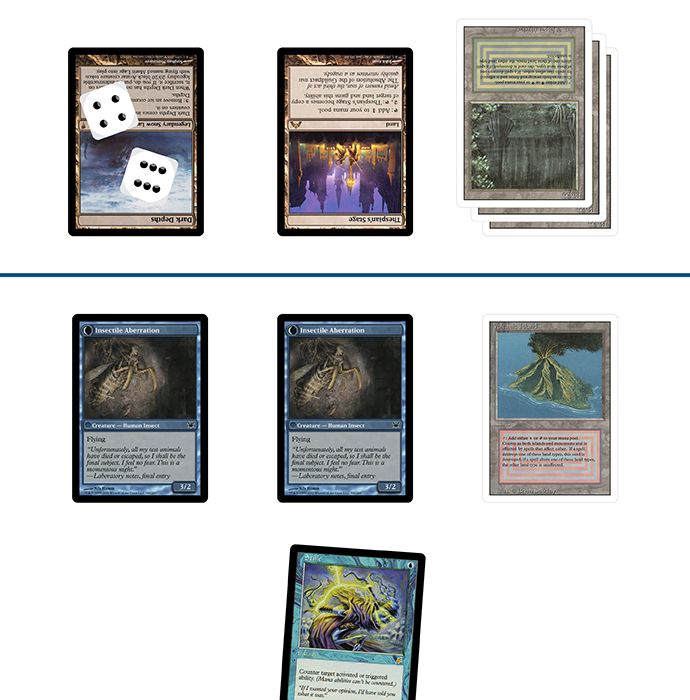
If they activate Thespian’s Stage targeting Dark Depths, that’s your window. Once they create a second copy of Dark Depths, it’s too late. They’ll
sacrifice the original as part of state-based actions, at which point their Stage-as-Depths will trigger. If you Stifle that, it will immediately trigger
again, since it puts a trigger on the stack whenever its condition (“[this] has zero counters”) is met.
You’re not going to get a lot of mileage out of that Stifle. If you Stifled the Stage activation, though, you’d be just fine. The same is not true of Wasteland, however. If you want to use Wasteland to break things up, you can wait until they make a second Depths, sacrifice the original, and then Wasteland in response to the trigger on the stack. The trigger won’t go on the stack again, as if it triggered whenever it was true, it would just put infinite triggers on the stack in response to itself.
Okay, lightning round:
– Don’t Stifle Standstill ever, it’ll just trigger again because you cast a spell.
– Stifle counters a Storm trigger, which means that if you ask what they’re targeting with their copies of Flusterstorm, you have explicitly allowed the
Storm trigger to resolve and create copies.
– You can’t Stifle Lion’s Eye Diamond – it’s a mana ability.
3. Karakas and Mangara of Corondor
This doesn’t come up much anymore, but here’s a rules explanation straight out of 2010’s playbook.
Your opponent has Mangara of Corondor, Karakas, and an Aether Vial on three. Their gameplan is pretty brutal – they’re going to activate Mangara targeting
one of your permanents and respond to that by activating their Karakas. Their Karakas is going to resolve, putting their Mangara in their hand. Their
activation will resolve, exiling one of your permanents. When they feel like it, their Aether Vial will put Mangara back into play.
If you want to use Stifle in the best way possible, when do you use it and on what?
If you want to use Lightning Bolt in the best way possible, when do you use it?
If you have Vendilion Clique, how do you end up nabbing their Mangara?
Answers
: You Stifle their Karakas trigger, since saving your permanent will always end up saving their Mangara.
You Lightning Bolt their Mangara in response to Karakas as well. If you wait until it’s summoning sick via Aether Vial, they can just Karakas it again.
You Clique in response to their Aether Vial activation, since there’s no other point where their Mangara is in their hand and they can’t respond with
Aether Vial.
4. Counterbalance and Wear//Tear
Pop quiz, hot shot: can your Counterbalance reveal of Wear//Tear counter their fused Wear/Tear targeting your Counterbalance and Sensei’s Divining Top?
Answer: No.
Reason:
When you cast Wear//Tear, you’re telling the game, “Hey, I’ve got this spell that does X and Y, it costs A and B.” The game then pushes all of that
together – your fused Wear//Tear costs 1WR and has the rules text of “Destroy target artifact. Destroy target enchantment.” It can be Blue Elemental
Blasted.
For contrast, when you cast Tear, you’re telling the game, “Hey, I’ve got this spell that does X, it costs A.” The game then sees that it doesn’t have to
do anything computational and just goes with what you told it. Since Tear is white and not at all red, it can’t be Blue Elemental Blasted.
When you reveal a card using Counterbalance, it asks you to reveal a spell. When you try to reveal Wear//Tear, the game basically asks you, “right, you
want to reveal Wear//Tear, but which one?” If you reveal Tear, it will counter their Brainstorm. If you reveal Wear, it will counter their Stoneforge
Mystic. If you reveal either one, their True-Name Nemesis will resolve.
5. Deathrite Shaman versus Delve/Grim Lavamancer/Street Wraith
In the war of Deathrite Shaman versus basically any other effect, Deathrite Shaman is going to lose. Let’s go over some cases so you can see how and why
that happens.
Against Sneak and Show, if you attempt to eat a Gitaxian Probe with Deathrite Shaman’s black-mana ability, they can respond by delving away that Probe to
help cast Dig Through Time. By contrast, if they’re in the middle of paying costs for a delve card, you don’t have priority to activate Deathrite Shaman’s
ability. Think of this as the rough equivalent of casting Orim’s Chant in response to them tapping some lands for their spell – they’re in the middle of
casting their thing, you can’t just jump in and do your thing.
Against U/R Delver, if you attempt to eat a Brainstorm with the black-mana ability on Deathrite Shaman, they can remove that Brainstorm to help pay for the
cost of Grim Lavamancer’s activation. If they only have a Scalding Tarn up and you have Deathrite Shaman against their Grim Lavamancer, you should wait
until they activate Tarn to make your move, as they’ll be out of red mana while you eat their card. Your Shaman will likely still die down the road, but
every point counts!
Against Manaless Dredge, if you attempt to eat a Golgari Grave-Troll with the green-mana ability of Deathrite Shaman, they can cycle Street Wraith in
response, replace the “draw a card” from Cycling with the Dredge ability on Grave-Troll, and you’ll be left with nothing to show for your activation. Quick
hint: go after their Narcomoebas and Ichorids instead. It’s way easier to run them out of free creatures.
To summarize: Deathrite Shaman is not the fastest draw in the West. Pick your spots carefully and, in some cases, more proactively. If you wait until they
have mana available, there’s a lot that they can do to spoil your Deathrite Shaman-based plans.
6. Counterbalance and Storm
Big misconception about Storm — a lot of people think that Storm “casts” the copies. It does no such thing. Here’s how a Storm card works:
1. You cast a bunch of spells. No confusion here.
2. You cast your Storm spell. Still no confusion.
3. The very next thing that happens after you cast your Storm spell is that the Storm trigger goes on the stack. This Storm trigger is embedded with the
knowledge of how many spells came before it. If and when this trigger resolves, it will create a known number of copies. You can’t respond to a Storm
trigger and have it end up making more copies as a result of those responses, for instance.
4. Both players get a chance to respond.
5. After both players pass on the Storm trigger, it resolves and adds N copies of the original spell to the stack. If it’s a spell with a target, new
targets may be chosen for each copy.
6. Players may respond as normal to the stack as it exists.
For the record, you want to Stifle your opponent’s Storm trigger at [3].
You want to Flusterstorm all of their copies of Empty the Warrens at [6].
You want to Mindbreak Trap all of their copies of Tendrils of Agony at [6].
If you have a Counterbalance, it will trigger at [2] and will not trigger at [5], since Counterbalance triggers when someone “plays a spell,” which is
old-Magic-template-speak for “casts a spell,” which is very different from “puts nine copies of a spell on the stack.” You will then get the opportunity to
counter the original spell, but you won’t get a shot at countering all of the copies.
7. More weird interactions with Counterbalance
Abrupt Decay will always kill Counterbalance, even if you can reveal a two-mana card. As it turns out, the designers really meant it when they put “Abrupt
Decay can’t be countered by spells or abilities” in the text box. If you’d like, you can reveal the top card of your library with the trigger – it just
won’t counter the Abrupt Decay. If you have a fetchland though, it can be a nifty way to sort of scry 1.
Krosan Grip won’t always kill Counterbalance. You may not be able to respond to Krosan Grip with spells or abilities, but that doesn’t mean that triggers
don’t go on the stack. If you Krosan Grip a Counterbalance and they have an Entreat the Angels on top, your Krosan Grip loses. If you’re on the
Counterbalance side of things, mind-game accordingly.
Engineered Explosives will be covered more extensively in the cost-increases section, but bear in mind that “converted mana cost” and “sunburst” are two
very different things. If you pay UUUUUW for Engineered Explosives, it can be countered by Counterbalance if they reveal Terminus. If it resolves, it will
be able to blow up all permanents with converted mana cost equal to two.
8. A Nice Bit of Misdirection
Misdirection is a weird card. I’m just going to get that out of the way first. Its primary use is probably the least intuitive one. At its core, it’s
supposed to be a way of pointing a spell at something else. It’s really intuitive to think about what happens if you Misdirect a Lightning Bolt from my
face to your face.
Stop Bolting yourself! Stop Bolting yourself!
Anyway, the way that people end up using Misdirection the most is as another Force of Will. To illustrate:
Them: “Jace, the Mind Sculptor.”
You: “Force of Will your Jace.”
Them: “Misdirection your Force of Will.”
So far, everything on this stack has been announced correctly. Misdirection has exactly one target, which is Force of Will. Force of Will is a legal target
for Misdirection because Force of Will also only has one target, which is Jace. Here’s where things get hairy:
As Misdirection resolves, the game asks it for a new target. Since Misdirection is still on the stack, it’s still a legal target for Force of Will. It’s
about to not be a legal target, but when it counts, it’s a legal target.
Of course, scumbag Misdirection immediately hops into the graveyard, at which point Force of Will is left looking like a total doofus because the game is
like, “hey bro, what do you want to counter?” and Force of Will is like “That Misdirection! The one in the graveyard! That one, right there, the one that
isn’t on the stack anymore. Yeah, that one.”
The game doesn’t have feelings, so it can’t really fathom how embarrassing this is for the Force of Will, but it politely lets the Force of Will know that
Misdirection is no longer a legal target, so Force of Will is going to be countered by the rules of the game for no longer having a legal target. Force of
Will gets sent to the graveyard.
Jace, the Mind Sculptor resolves.
A few quick hits:
– A Misdirection can redirect an opposing Lightning Bolt or Abrupt Decay or Swords to Plowshares at an opposing True-Name Nemesis. True-Name Nemesis has
protection from you, not from your opponent or their spells.
– If you Misdirect a Thoughtseize, they get to pick, but they have to pick a legal card.
– You can’t Misdirect a Duress because it specifically says “target opponent.”
– Misdirecting a Hymn to Tourach is good, and I would recommend doing it.
A fun corner case: if you have the only blue permanent in play and they cast Pyroblast on it, you can Misdirect it to anything else. If they Red Elemental
Blast it, you’re out of luck. Here’s why:
Pyroblast’s condition checks on resolution, while Red Elemental Blast’s condition checks at the point where a target is selected. If Pyroblast ends up
targeting something that isn’t blue, it just doesn’t do anything. By contrast, Red Elemental Blast literally is not allowed to target things that aren’t
blue.
Pyroblast is typically considered “better” in this context because it can enable Threshold, Storm, Treasure Cruise, Grim Lavamancer, and so on. Red
Elemental Blast is better against Misdirection.
In both cases, however, the mode (permanent or spell as a target) is locked in and cannot be changed by Misdirection.
9. The Price of Progress (is about two life per nonbasic land)
Price of Progress is making its way back into the collective Legacy consciousness after U/R Delver cruised back into the spotlight with a manabase
featuring four basic lands and some copies of Price of Progress. So how can you play around this card better than Ross Merriam?
For starters, you know that you can Wasteland your own lands. If you want, you can even Wasteland your own Wasteland – you pick targets before you pay
costs, so at the point where you point Wasteland at its target, it is still in play.
You have some flexibility beyond Wasteland though – Daze is another great way to dodge some points of damage. If you’re in a serious bind and it’s going to
come down to exact damage though, you can activate a fetchland and fail to find a land, effectively losing one life instead of two. It’s a desperate move,
but living is always preferable to dying against Price of Progress.
10. Suspend and Cascade
We went over Rift Bolt versus Stifle earlier on, so you can figure out that Ancestral Vision and Stifle interact identically. What may confuse you is that
Stifle doesn’t work against a Shardless Agent revealing an Ancestral Vision. Why the difference?
Cascade is kind of like Aether Vial – by the time you get to see what’s on the other side of the curtain, your chance to counter the ability is gone. You
can cast removal on the creature that came out of the Vial and you can counter the spell being cast off of cascade, but you can’t Stifle the effect
anymore.
On a much different note, the interaction between Ethersworn Canonist and Suspend cards is a little tricky. Basically, the rules text of Suspend tells you
that you have to suspend something rather than casting it, but you can only do it at a time where you could cast your thing. What does that mean?
Well, let’s start with the basics. We know that we can’t suspend Ancestral Vision on our opponent’s turn, right? How do we know that? Probably because we
grew up believing that the only time we could suspend things is in our own main phase. This heuristic is right about 99.9% of the time, but it doesn’t
really teach us anything.
The real rule of Suspend is that you can suspend something if you could play it. If you have Teferi, Mage of Zhalfir in play, you can suspend Aeon
Chronicler at the end of your opponent’s turn. If you have Vedalken Orrery in play, you can suspend Ancestral Vision at the end of your opponent’s turn. If
you could cast a thing, you can suspend it. Makes sense, right?
Enter Ethersworn Canonist.
You cast a nonartifact spell – let’s say it’s Abrupt Decay targeting their Umezawa’s Jitte. Everything’s cool, it resolves.
You try to suspend Ancestral Vision. That one isn’t going to fly. See why?
You can’t cast any nonartifact spells for the rest of the turn. If you can’t cast Ancestral Vision, you can’t suspend it. If you had suspended it first,
you could’ve followed up with Abrupt Decay and everything would be alright. As it is, you’re stuck with this awkward Ancestral Vision in your hand. Whoops!
11. Resolving Cabal Therapy (or Pithing Needle, or Phyrexian Revoker, or…)
Let’s say you cast Cabal Therapy targeting your opponent, who has a blue mana up. What happens?
Well, you put your spell on the stack. Right away, you have an excellent chance to make a huge mistake. If you announce your spell as “Cabal Therapy you,
naming Brainstorm,” you’re basically locked into that decision if your opponent doesn’t want to respond. There’s some history to how this rule came about,
but the short of it is that people used to run some pretty borderline tactics with the card Persecute back when it was in Standard, so Wizards changed the
rules to benefit the player on the receiving end of a “name something” discard spell or the like.
The upshot of this rules change is that if you announce a choice related to a card’s resolution before the point where you would have to make that choice
and your opponent sees no problem with letting the game progress to the point where you would actually have to make that choice, you’re locked in. You
can’t say “Therapy you, name Brainstorm” as a way of convincing your opponent that you won’t name Force of Will, only to back things up and say “well, now
that my Cabal Therapy is resolving, I’ll name Force of Will.” That’s dirty pool, and judges are right to no-sir you on those shenanigans.
You can and should extrapolate that knowledge to Pithing Needle and Phyrexian Revoker, by the way. The rule governs all of those cards.
There’s more than the “don’t cheat” admonition to this section though – if you do this earnestly, you’re giving away a ton of information. That’s because
your opponent is still allowed to respond to your free-information Cabal Therapy, and now they can do so with the knowledge that you would be forced to
name your announced card if they don’t respond. If they have a Brainstorm, then they know to cast it or lose it. If they don’t, they can let your Cabal
Therapy miss.
If your opponent decides to respond to your Cabal Therapy (or Needle, or Revoker, et cetera) in any way, however, you get to name a new card. This isn’t to
say that you should make a habit of naming cards as you cast Cabal Therapy, it’s to make you aware of your rights as a player. In general though, naming a
card before Cabal Therapy resolves is structured to be disadvantageous for the caster.
On the other side of the coin, if you ask someone what they’re naming with Therapy, it has explicitly begun to resolve, and you can no longer respond to it
with any spells or abilities. You can’t ask your opponent “what are you going to name?” and then respond with that card if they tell you. That’s dirty
pool, and any judge worth their salt is going to come down hard on you if they think you’re doing that to gain an advantage.
Everything that I just said about Cabal Therapy also applies to Pithing Needle and Phyrexian Revoker, although I do want to remind you that Phyrexian
Revoker sees play in decks with Aether Vial. When someone activates an Aether Vial on two and you have, say, an Umezawa’s Jitte with a counter on it, your
last opportunity to use that Jitte is when their Aether Vial is tapped and their Revoker is in their hand. Remember how Aether Vial works – if their
creature is revealed, it’s in play and the ability has resolved.
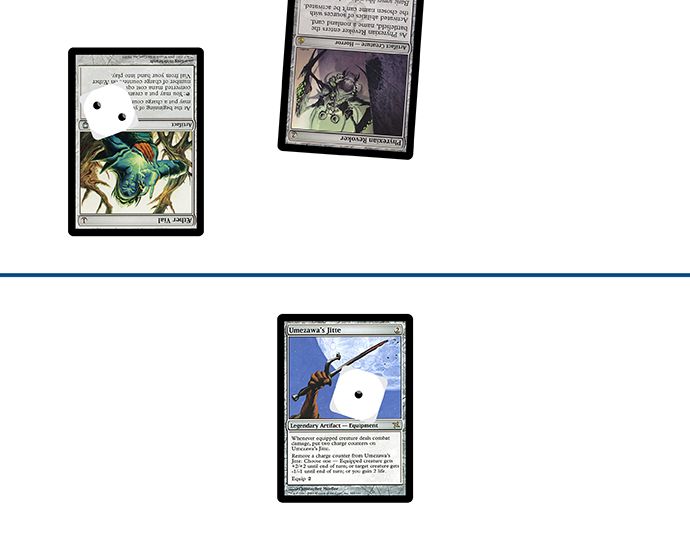
Since Phyrexian Revoker’s ability isn’t a trigger, that means that the Revokered card gets named as Revoker enters play – you can’t respond with the
ability once you see that Revoker is coming to play. If Phyrexian Revoker (or Meddling Mage, or Pithing Needle) is in play, it is by definition naming
something, which means that those things can’t be activated (or cast, in the case of Meddling Mage).
Just some food for thought the next time someone activates an Aether Vial on two against you.
12. Pendelhaven + Pump Spells
Now that Tom Ross has shown us the glorious light of the Phyrexians, it’s important to remember how Pendelhaven works. Consider the following:

Pendelhaven’s ability checks whether or not it’s legal both when you target something and when it tries to resolve. If it isn’t legal on resolution, the
ability fizzles. Let’s see how this could work with the above board.
You attack with your Glistener Elf and trigger Exalted. Your opponent lets it resolve, then Lightning Bolts your Glistener Elf. You Invigorate in response.
They take six poison and go to nine.
Hmm. That probably could have gone better, right?
Let’s back up.
Start by Pendelhavening. Glistener Elf becomes a 2/3.
Attack, trigger Exalted. They respond with Lightning Bolt, you respond with Invigorate, and they end up taking seven poison.
Much better.
13. Everything You Ever Wanted to Know About Griselbrand
Some quick hits: Reanimate and Exhume are different cards. Reanimate has a target. Exhume does not. If you remove their Reanimate target, it will stop
working. If you respond to Exhume with Deathrite Shaman or Tormod’s Crypt or Surgical Extraction, they can wait for that to happen and then respond to
their own Exhume with an Entomb, burying another creature before resolution.
Incidentally, if you’re trying to play around exactly Vendilion Clique as Reanimator, it is correct to cast Exhume and respond with Entomb, since a savvy
Vendilion Clique caster will respond to your main phase Entomb with Vendilion Clique, taking your reanimation spell.
Let’s get into some weirder situations.
You cast Show and Tell and have a Griselbrand. You cast it, it resolves, you put Griselbrand face-down. Do you know what happens if they put down:
– Pacifism
Let’s go in order:
– Pacifism can only enchant creatures that were in play before Show and Tell. It’s entering play at the exact same time as Griselbrand, so it doesn’t see
Griselbrand as a legal target.
– Same story with Phantasmal Image – you can’t copy something that enters play at the same time as Phantasmal Image.
– Same story with Phyrexian Metamorph – it’s an as-this-enters-play thing, so it has to choose from among preexisting permanents.
– Sower of Temptation is a trigger, so it will go on the stack after both creatures are in play and can see the Griselbrand. Sorry about your 7/7, bro.
– Same story with Oblivion Ring – it’s a trigger, it sees Griselbrand, no more Griselbrand.
– Containment Priest’s story is the same as Pacifism’s and Image’s and Metamorph’s. Those cards aren’t getting beat to the party by Griselbrand, so they
can’t copy it. Containment Priest isn’t beating Griselbrand to the party, so Priest can’t shut the door on Demon. They just kind of stroll in together.
– You call a judge, explain that your opponent tried to put in an illegal card type with Show and Tell, and wait for the judge to explain to your opponent
that they can’t make a new selection, since they now have information that they shouldn’t have. They’ll pick up their Jace, you’ll keep your Griselbrand,
and life will go on.
That should be just about everything Griselbrand-related. A few ancillary quick hits:
– You can Stifle an Animate Dead’s trigger, at which point the enchantment will stick around in play. It can be bounced and replayed for effect, if they’re
able to do that.
– If you bounce your own Animate Dead with Tidespout Tyrant, Tyrant will go back to the graveyard and Animate Dead will go back to your hand. It’s not a
bad protection scheme.
– Exhume and Containment Priest works the same way that Show and Tell does – they enter play at the same time, so an Exhumed Priest can’t shut out an
Exhumed anything-else. If you have Containment Priest in play and their Exhume resolves though, each player must pick a legal target to get Priested out of
the game. It’s a pretty serious blowout.
14. Bridge from Below + Anything
Bridge from Below is a really weird card because it has zero abilities while in play and two abilities while in the graveyard. Since it’s a core element of
a competitive Legacy deck though, you should probably know what it does.
The single biggest misconception about Bridge from Below is that control of the “exile this” trigger changes depending on whose creature dies. In
situations where the owner of Bridge from Below doesn’t know how their card works, this can lead to some awkward stacking situations that end up depriving
the Dredge player of their rightful Zombies. Let’s take a closer look at how the situations work in ascending order of complexity, assuming that when I say
“creature” what I really mean is “nontoken creature,” because I’m not typing that out every time, and you know that Bridge from Below doesn’t go infinite
with itself:
– When one and only one opposing creature dies – let’s say that a Mogg Fanatic sacrificed itself — Bridge from Below’s second trigger goes off once. It
resolves and hops out of the graveyard and into exile. Real simple.
– When two opposing creatures die, the second trigger goes on the stack twice, but the second instance of that trigger fizzles because there’s nothing to
remove.
– When a creature that Bridge’s owner controls dies, the first trigger goes on the stack, resolves, and makes a 2/2 Zombie. Again, basic.
– When two creatures controlled by Bridge’s owner die, two Zombie-making triggers go on the stack. Upon resolution, each one makes a 2/2.
BIG PLAY ALERT:
– When two creatures trade off, both triggers fire off. In this case, the owner of Bridge from Below can choose how to stack them. There is an optimal way
to do this – stack the second one and then the first one, letting the Zombie-making one resolve first and then removing your Bridge due to an opposing
creature’s demise. This is where a lot of people mess up – they think that their opponent somehow controls their Bridge from Below trigger because “it’s
their creature.”
Mary, Mary, quite contrary, how does your legion of Zombies grow?
With good attacking and proper stacking
Of the triggers from Bridge from Below.
Nursery rhymes aside, there is one thing that you may have missed with all of that. Here’s the extra credit question:
You have a Narcomoeba. Your opponent has Vedalken Shackles. They activate Shackles and steal your Narcomoeba. You untap and Dredge your Darkblast.
Assuming your Darkblast resolves and kills Narcomoeba, what trigger(s) will go on the stack from the Bridge from Below in your graveyard?
Think about it.
Reread the card.
The important words here are “your graveyard.”
When you Unsummon your creature after they steal it, it goes to your hand, right?
When you Jeskai Charm your creature, it goes on top of your deck, right?
When you Darkblast your creature, it goes to your graveyard.
Your token.
No Bridge from Below removed.
Play on.
Lightning round!
15. Humility and various creatures
Painter’s Servant still works.
Magus of the Moon still works.
Equipment “trumps” Humility. To add insult to injury, Batterskull on a Germ token is a 5/5, since the Germ becomes a 1/1.
Meddling Mage names something but doesn’t stop it from being cast. If Humility leaves, it works again.
Harmonic Sliver can’t blow up Humility.
16. Lion’s Eye Diamond
It’s a mana ability that you can only activate at instant speed. All other interactions with it work the same way as with lands being tapped. To wit:
– You can’t respond to someone activating Lion’s Eye Diamond.
– You can respond to their madness trigger though.
– You can legally Pithing Needle Lion’s Eye Diamond, but it’s not going to stop the Black Lotus ability, since that’s still a mana ability.
– Phyrexian Revoker does stop Lion’s Eye Diamond, since Phyrexian Revoker isn’t worded in such a way so as to exclude mana abilities.
Check out that wording difference.
If you have a three mana spell and a Lion’s Eye Diamond in play and nothing else, you aren’t casting that three mana spell. The reason why is very simple,
if you remember that you can only activate Lion’s Eye Diamond when you could cast an instant. After all, can you cast a Dark Ritual as you’re trying to put
Pox on the stack? No? Then you can’t put Pox on the stack and pay for it with Lion’s Eye Diamond. Same deal. If you successfully add mana to your mana pool
with Lion’s Eye Diamond, then your hand will be empty as the mana hits your mana pool.
On the other hand, if you have three black mana, eight storm, and an Infernal Tutor plus Lion’s Eye Diamond in hand, you’ve got a way to win. Here’s how
you verbalize your sequence:
1. “Cast Lion’s Eye Diamond.” [wait for confirmation that it resolves]
2. “Cast Infernal Tutor and hold priority.” [take a breath, you still have priority, it’s not going anywhere]
3. “Activate Lion’s Eye Diamond for three black mana.” [if you want to showboat, you can wave your hands around to verify that you indeed have no cards in
hand, per Lion’s Eye Diamond’s cost]
4. “Does Infernal Tutor resolve?” [if your opponent has a Force of Will, this is where they are supposed to cast it, since get rekt, etc.]
5. “Find Tendrils of Agony and cast it, trigger Storm and make nine copies, they all target you.”
That’s game!
17.Sylvan Library
Sylvan Library has a trigger that happens as your draw step starts. If you want it to happen, you should announce it. As it resolves, you’re going to want
to keep the cards you “draw” with Sylvan Library explicitly separate from the rest of your hand. If they touch your hand, your opponent is going to be able
to make a compelling case for you having decided to pay four life per card to keep them.
Things get real complicated when you cast Brainstorm in your upkeep. See, the thing about Sylvan Library is that its condition is “cards that you’ve drawn
this turn.” In a world where you’ve drawn three cards in your upkeep and shuffled two unknown cards away, you have an unknown number of cards in hand that
are eligible for Sylvan Library’s condition. I’m pretty sure that the only way to resolve this legally is by calling a judge and having them supervise the
situation from the beginning to ensure that you’re following the rules. If you’re playing Kitchen Table REL, your friends are just going to have to trust
you.
18. Cost Increasers
I’m going to talk about these as a single section, because they all use the same logic, so you should get used to thinking about them in the same way. If
you have Treasure Cruise and they have Thalia, Guardian of Thraben in play, what is:
– Treasure Cruise’s converted mana cost?
– Treasure Cruise’s cost to cast?
– The difference between the first two things?
Let’s work our way backwards. The converted mana cost of a thing never, ever changes. If it changed depending on cost increasers, you would see a lot of
people locking out all spells with three copies of Thorn of Amethyst plus Gaddock Teeg, right? But if you have three Thorns and a Teeg, they can still pay
four mana to cast their Ponder. What gives?
In a nutshell, your ability to play Ponder for four mana into a Gaddock Teeg and three Thorns is the difference between cost and converted mana cost. Put
another way, Thorn of Amethyst plus Chalice of the Void on one will mean that if you want to cast Brainstorm, it will cost two mana and then get countered
by Chalice of the Void for costing one.
Now that we know that, we can easily figure out Cruise’s cost to play (7U + 1 = 8U) and converted mana cost (7U, always and forever). But you probably have
another question on your mind. Let me help you answer that for yourself.
Does it still have delve? Yes?
Does delve tell you that there’s a limit on how many cards you can delve away? No?
So you can reduce a card’s cost by as much as you want? If you felt like it, you could use a delve card as a means to Tormod’s Crypt yourself? I see.
So if you have eight cards in the bin, it turns out that Thalia isn’t much of a hindrance to your gold-hunting vacation plans. Nice!
Let’s take a quick look back at a card briefly discussed earlier:
Explosives has two distinct values: its Sunburst value and its converted mana cost.
The Sunburst value is a number between zero and five. There are really only six possibilities here.
The converted mana cost can be literally whatever you want it to be. It’s just X. Let’s get some examples going:
– You can pay zero mana for it, give it zero counters, and wipe out a few flying 3/2s that used to cost one mana, but whose flipsides have a converted mana
cost of zero.
– You can pay one mana for it using a colored land, give it one counter, and wipe out a Monastery Swiftspear and a Delver of Secrets.
– You can pay one mana for it using a colorless land, give it zero counters, and wipe out a Chalice of the Void on zero.
– You can pay three mana for it using two different colors, give it two counters, and dodge Spell Snare.
– Mana paid toward Daze and Spell Pierce doesn’t contribute to Sunburst.
– You can pay “zero for X” but pay colored mana for cost increasers and have that colored mana count toward Sunburst. For instance, you can cast EE where X
= 1 and pay Thalia’s additional cost using a second color of mana, essentially paying two mana for a two-counter EE. Boom.
You get the idea.
One very, very relevant rules change that happened with Khans of Tarkir: previously, Delve was considered a “cost reducer” in the same way that Sphere of Resistance is a “cost increaser.” The relevance of that statement is that “cost reducers” are materially different than “paying mana.” This rules change means that Trinisphere has gotten just a smidge weaker. How’s that? Glad you asked.
Trinisphere doesn’t work like other cost increasers because it isn’t a cost increaser. Cost reducers (like Delve) and increasers (like Thalia) affect the
up-front cost of a spell, but Trinisphere is more patient. It waits at the end of the line for everyone to show up with their gifts and demands, strolling
in after everything is gone and popping the question:
“So, how much did they pay for ya?”
If the answer is anything less than three literal manas, then Trinisphere has some bad news for you. This is where a lot of people mess up with, say, Force
of Will. Force of Will sure looks like it costs five mana. It even says so right on the card! Five mana, upper right.
Oh, but what’s that? You say you aren’t actually paying five literal manas, you’re just exiling a blue card and Force of Will is okay calling it square?
Well, then, Trinisphere has something to say about that. You see, after you exile the card and pay the life, Trinisphere is going to come asking for your
three mana. It doesn’t care about the converted mana cost – hell, Treasure Cruise costs eight – it just cares about how much literal mana you paid for your
thing.
Two Sapphire Medallions dropping the cost of your Jace through the floor? Excuse me sir, you’re going to have to pay a third mana for that.
Whereas Delve would have been in this camp three months ago, it turns out that you can Delve away cards to satisfy Trinisphere’s “three mana to ride” requirement. Yes, Virginia, you can still pay one single blue mana for Treasure Cruise under Trinisphere. That card is seriously busted.
More than seven thousand words later, I think I’ve covered most of Legacy’s absurd rules interactions. I’d like to thank Lucas Siow for explicitly asking
for this article and for providing most of the cases discussed herein. Lucas, if you’re reading this, I hope this is what you were looking for.
As for everyone else, I hope that you’ve learned something today. If you still have questions, please don’t hesitate to ask.
Good luck this weekend!


